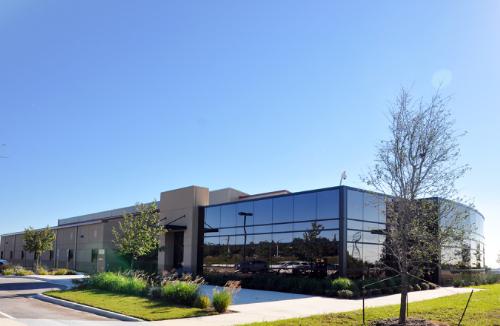Quantum Materials Corp (OTCQB:QTMM) today announced it has signed an agreement with STAR Park that will quadruple the Company's Quantum Dot production space when the new state-of-the-art lab and offices are completed on or before June 2015. The Company is also recruiting to double its scientific staff effective January 2015.
"It is extremely gratifying that our work is meeting with industry acceptance from some of the most technologically advanced companies in the world," said Quantum Materials Founder and CEO Stephen Squires. "Our expansion demonstrates our commitment to meet the demands of next-generation television and display, solid-state lighting and solar energy manufacturers. We will be bringing to San Marcos top scientists and chemists to develop non-heavy metal tetrapod quantum dots and thick-shell technology to optimize them for each client's purpose and to their true commercial potential."
 |
|
Star One Building, Star Park, San Marcos, Tx. Quantum Materials Corp is expanding its labs and offices within STAR (Science Technology and Research) Park, in the Silicon Hills of the Austin Metroplex. (Quantum Materials/LEDinside) |
In a recent Reuters News article Samsung and LG Display discussed the use of quantum dots to create the next-generation Ultra High Definition televisions rather than Organic Light Emitting Diodes (OLED). In the article an industry analyst estimates that a 55-inch quantum dot TV would only cost consumers about 35 percent more than a current LCD TV, while an OLED TV could be 5 times more expensive. Quantum Materials' patented and automated process for quantum dot manufacture can further reduce manufacturer's costs through economies of scale.
At this time, there are a few heavy metal (Cadmium-based) quantum dot televisions on the market. Quantum Materials is aware of ecological concerns about Cadmium and is currently developing non-heavy metal (NHM) quantum dots under Company-owned patents for the Ultra High Definition display market. Industry research has shown NHM quantum dots to be environmentally friendly but have yet to demonstrate NHM quantum dots of a quality, quantity, reliability and price necessary to justify industrial production. The company believes these problems will be overcome with our current intellectual property, automated processes and top scientific personnel.
Photo: Star One Building, Star Park, San Marcos, Tx. Quantum Materials Corp is expanding its labs and offices within STAR (Science Technology and Research) Park, in the Silicon Hills of the Austin Metroplex. The 58-acre STAR Park is a collaborative effort of Texas State and research partners serving as a catalyst for continued public/private development of new or improved technologies.












